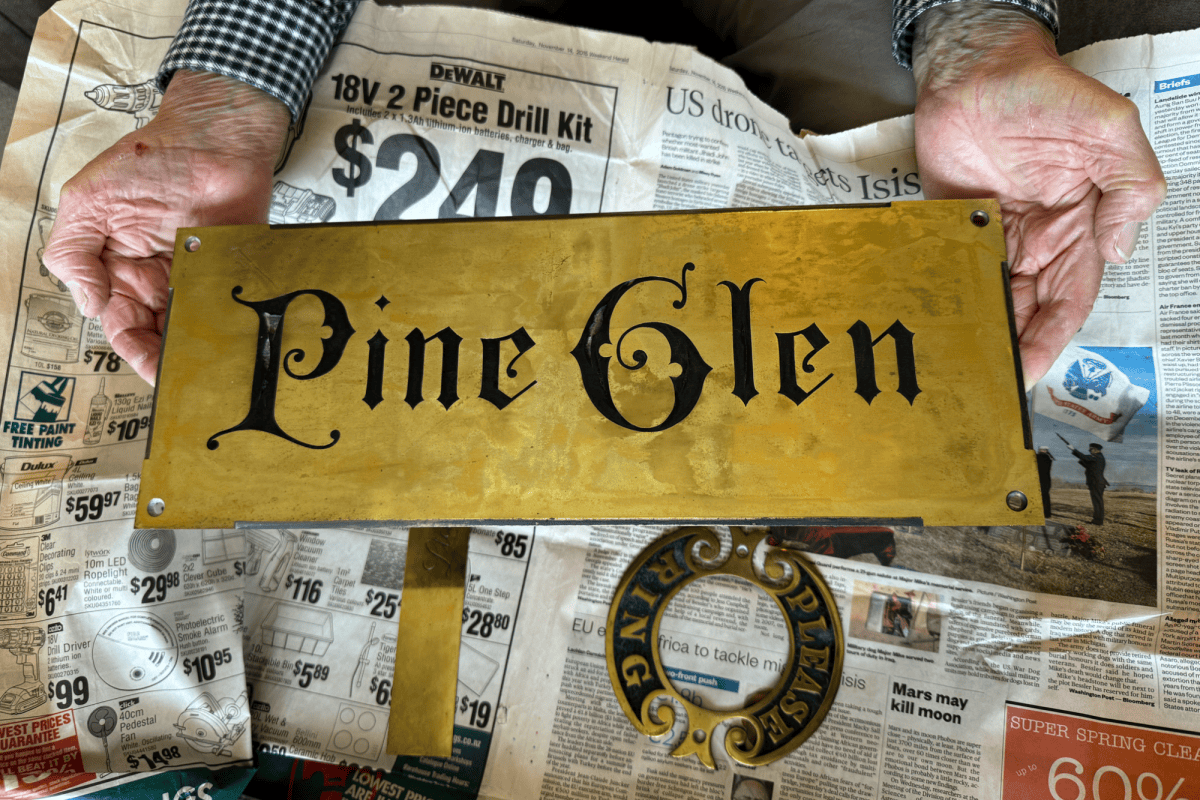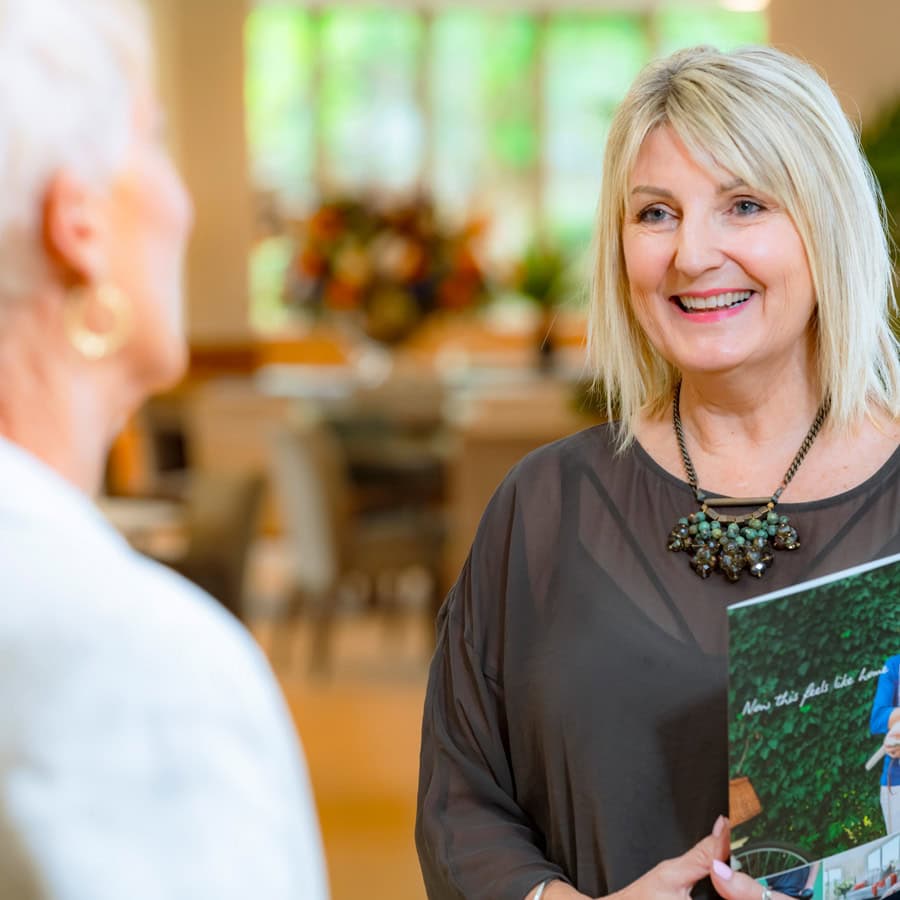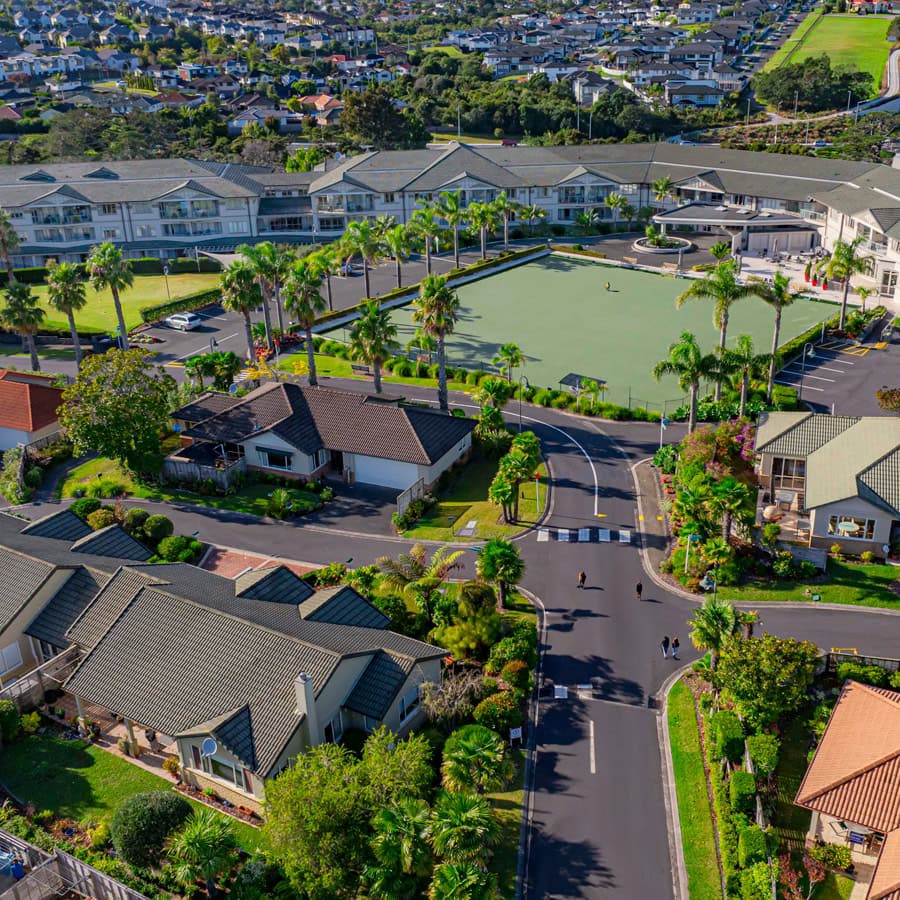The richness of stories and extraordinary lives among Fairview Lifestyle Village residents never ceases to amaze both staff and fellow community members. With this in mind, we are embarking on a series of profiles to spotlight these exceptional individuals. Our first feature is Gerald Anderson, the last maestro of brass plate engraving in New Zealand. A beloved member of our long-standing Whisky Club since moving into the village in 2011, Gerald recently shared his fascinating life story with fellow members to much acclaim. We are privileged to now share it with a broader audience.
Early Life and Boyhood in Otago and Auckland
Born in Alexandra, Otago, in 1936, Gerald’s early days were framed by the landscapes of New Zealand’s South Island. By the age of four, the Anderson family had relocated to Mairangi Bay, Auckland. Here, against a backdrop of the Pupuke Golf Course, Gerald’s childhood unfolded. Music became a passion for young Gerald as early as age seven when he picked up the flute—an affordable and portable instrument. His academic days at Campbell’s Bay Primary were complemented by his love for music and a trip to the Bay of Islands that left a lasting impression. For a brief period during WWII, he attended Te Kuiti Primary School in Waikato, while his parents, involved in the home guard, ensured the home front was secure.
When he later attended Takapuna Grammar School, he found a niche in the Auckland Junior Symphony Orchestra. For three to four years, he was part of this ensemble, playing the flute. The annual concerts in the Auckland Town Hall, with him dressed in formal attire of black trousers, dinner jacket, and bow tie, became defining moments of his high school years. But even as music filled his life, another legacy beckoned him—the intricate art of brass plate engraving, a craft he would come to master under his father’s guidance.
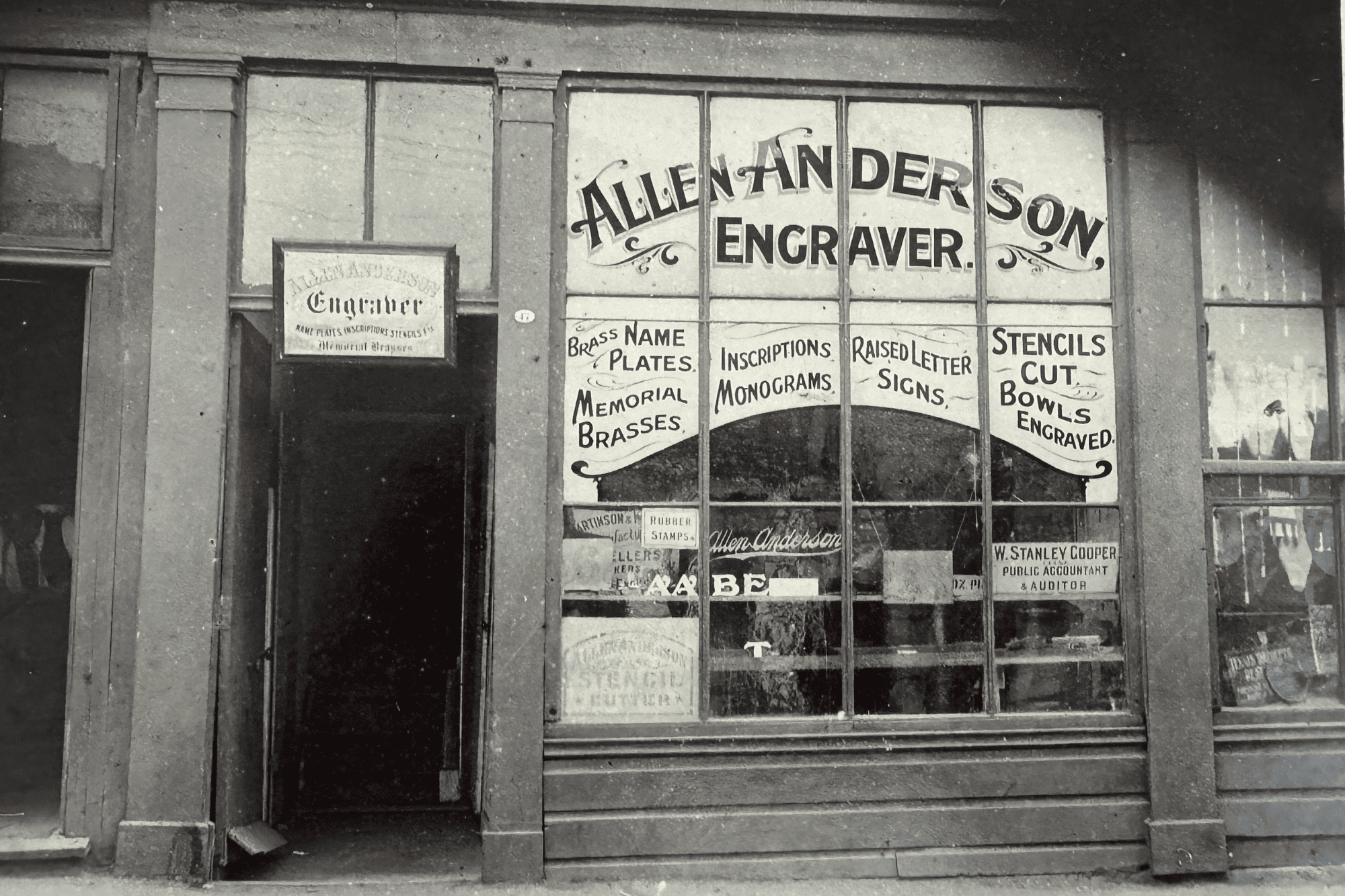
Mastering the Art of Engraving
The legacy of brass-plate engraving in the Anderson family traces back to Gerald’s father, a master of the art and perhaps the only such engraver in the entirety of New Zealand. Between 1906 and 1930, he was responsible for creating and engraving the first batch of brass badges that displayed AA membership on the front bumpers of cars. Each was engraved with “Anderson, Auckland,” along with a number on the back, and these badges have now become collectors’ items. His skills were also evident in grander projects, like the Roman Catholic Bishop Lenihan’s memorial plate—a magnificent creation measuring 5’9” in height and 2’6” in width, which still graces St Patrick’s Cathedral in Auckland 113 years after its creation.
It was at Worrells Jewellers in downtown Auckland that Gerald’s own journey into this world began. Under a 5-year apprenticeship, he not only learned the basics but was moulded by the very best—his father. The craft then had a raw purity; there was no machinery, just the rhythmic dance of hammer and chisel on brass. It was here that Gerald collaborated with Arthur Wilson, a fellow craftsman who would later become a familiar face at Fairview.
During these early days, Gerald worked on many different projects, from plates engraved in intricate Olde English or Gothic lettering to designs adorned with elaborate borders and scrolls. Each piece was a labour of love, sometimes requiring months of painstaking effort. Two notable works include sundials, one displayed outside Rawene Hospital in Hokianga, the other in the Rose Gardens at Whangarei. These were designed by Gerald and engraved by hand over months. Despite how long these took, they are not the trickiest thing he ever had to engrave. Ships bells, due to their curvature, posed the biggest challenge. With every piece engraved, Gerald continued the legacy of his father, becoming New Zealand’s stalwart in a craft many feared was vanishing.
Adventures Overseas and a Love Tale at Sea
Embarking on his OE (Overseas Experience) in the early 1960s, Gerald seized the opportunity to broaden his horizons. After joining the Overseas Visitors Club (OVC) in New Zealand, he flew to Sydney to board a passenger ship bound for Europe—a journey that took six weeks. Upon arriving in London, he found lodging in an OVC hotel and soon connected with three Australian men seeking a fourth companion for their continental tour. Together, they traversed thousands of miles in a 1958 left-hand drive Mercedes Benz. Their adventures were varied and at times intense, most notably at Checkpoint Charlie in Berlin. This notorious border crossing during the Cold War presented a unique challenge; the Australians had to shave their beards to resemble their IDs closely, or they risked being detained.
After six months of camping, driving, and absorbing new cultures, Gerald returned to the United Kingdom. It was in Scotland where his love for the bagpipes manifested into a custom order—complete with Anderson tartan—that he would later pick up on his voyage home.
The homeward journey had its own surprises. Aboard the ship was the New Zealand Brass Band, recent world champions, filling the sea air with melodies. It was on this ship that Gerald met Sue, a Scottish nurse with dreams of Australia. A dinner dance ashore led to immediate sparks; so immediate that within 48 hours, Gerald proposed, and Sue accepted. Amending her initial travel plans, she gained special permission from the ship’s captain to disembark in Wellington rather than Sydney, electing to begin her new life with Gerald in New Zealand. The couple married, and Sue became a theatre sister at Auckland’s National Women’s Hospital. Together, they had three children—Julie, Katie, and Alan—sealing a tale of love born from adventure, forever anchored in their shared history.
Entrepreneurship, and Family Life
While their children were still in school, Gerald and Sue found an opportunity in a stationery shop for sale in Mairangi Bay. Seizing the chance, they purchased the shop and named it ‘Anderson’s Stationery,’ where they made a good living for years. Amid these entrepreneurial pursuits, Gerald never lost sight of his engraving passion. Initially operating from the garage at home, he established Anderson’s Engraving. As the business expanded, he teamed up with Tony Casey to co-found ACE Engravers (Anderson and Casey Engravers), where he continued to further his engraving legacy until his retirement.
Throughout his engraving career, Gerald had several standout moments. Among these was the honour of engraving gold medals for the Thoroughbred Racing Association of New Zealand, presented to Queen Elizabeth II during her visit to Auckland. He also won the tender to be the sole engraver for all the medals at the 1990 Commonwealth Games held in Auckland—meticulously engraving hundreds of bronze, silver, and gold medals on their edges.
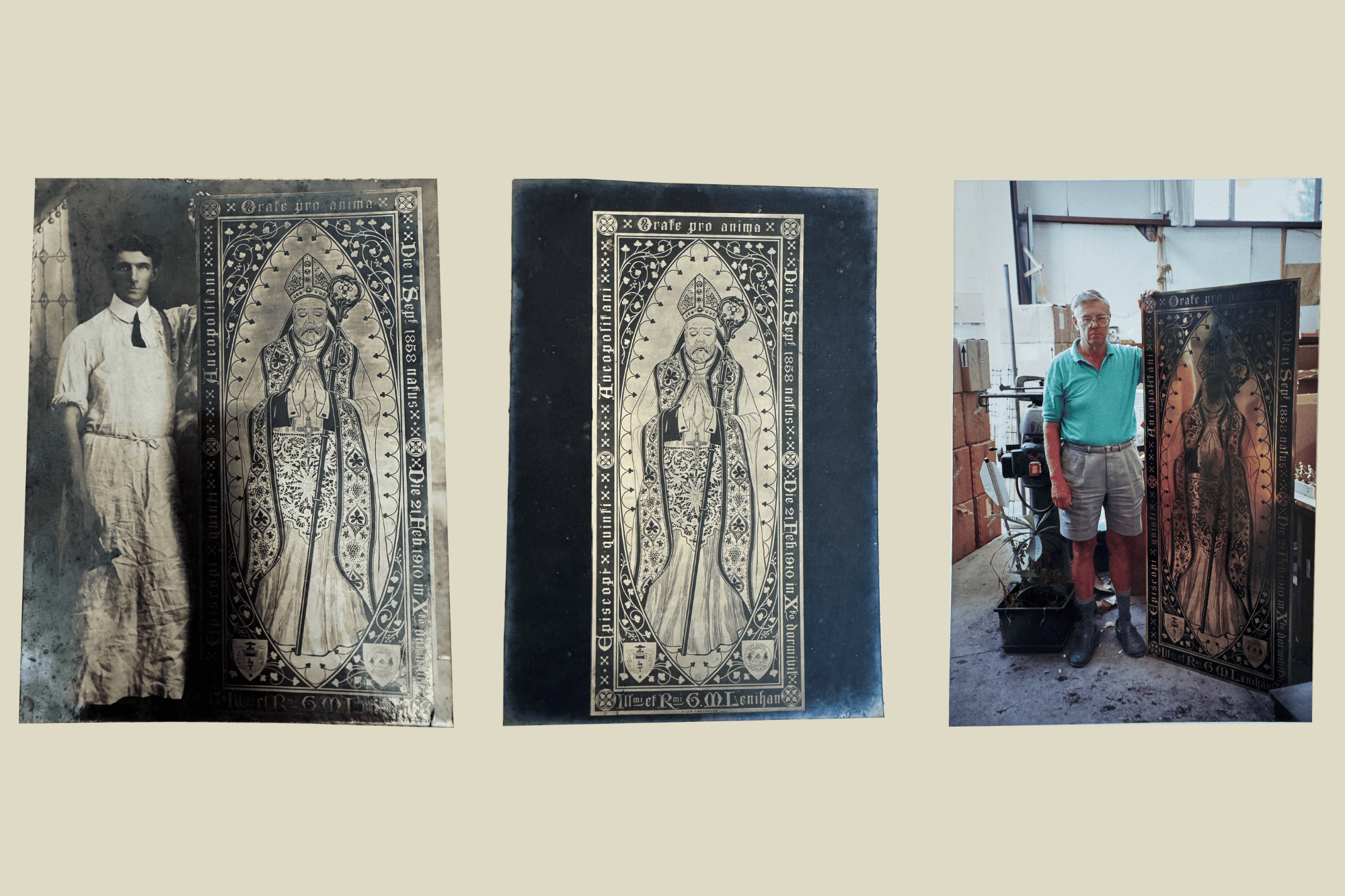
A Circle of Craftsmanship: Gerald Anderson Restores His Father’s Masterpiece
Many years after Gerald’s father completed the Roman Catholic Bishop Lenihan’s memorial plate, the grand creation had fallen into disrepair. As St Patrick’s Cathedral underwent renovations and the memorial plate approached its centenary, the church sought someone with the finesse and skill to restore the masterpiece to its original glory. In an act of poetic destiny, they found none other than Gerald, the son of the original craftsman. With dedication, Gerald refurbished the piece, ensuring it gleamed as brilliantly as the day it was first completed. Yet, he added a touch uniquely his own: on the back, he engraved, “This plate has been refurbished by the son of his father who did this work.” In doing so, Gerald ensured that the Anderson legacy, intertwined with the art of engraving, remained immortalised for generations to come.
Life at Fairview Lifestyle Village
Since moving to Fairview Lifestyle Village, Gerald has truly found a community where he belongs. He initially settled in a villa, completing his final engraving project in the garage. After the loss of his beloved wife Sue, he transitioned to an apartment in Fairview’s main lodge. The space is a testament to a life well-lived, decorated not just with his extraordinary engravings and professional tools, but also with cherished photographs of family and friends. These keepsakes frequently become talking points during the Whisky Club meetings he actively participates in. Well-regarded in the community, Gerald often shares insights into the fine art of engraving with residents who show interest.
One remarkable aspect of Gerald’s work is its enduring impact; the items he has engraved will be admired for generations to come. This lasting quality is perhaps the most gratifying aspect of his career—a tangible legacy that will transcend time.
We extend our heartfelt thanks to Gerald for sharing his remarkable work and life story with us. It is a great privilege.
